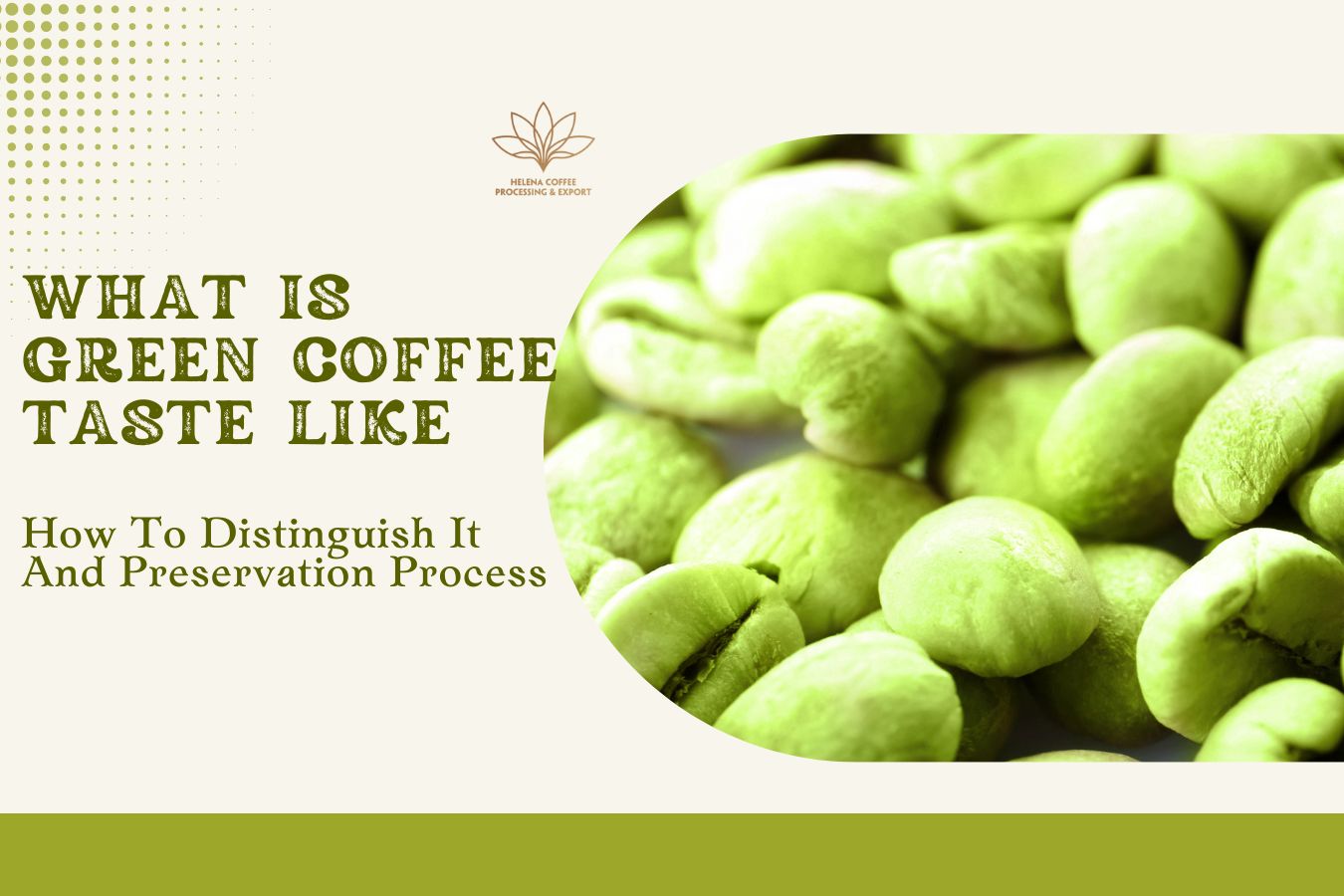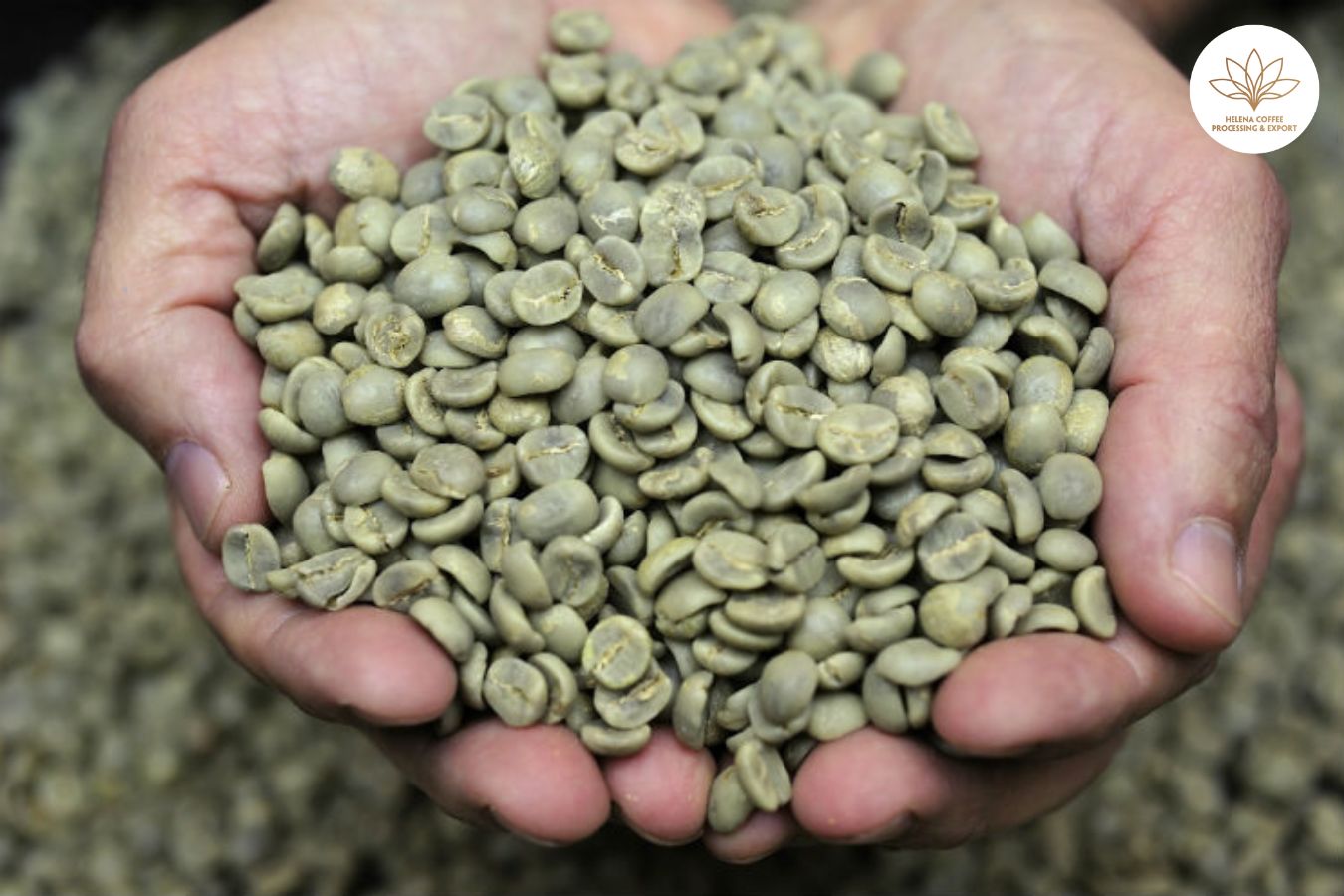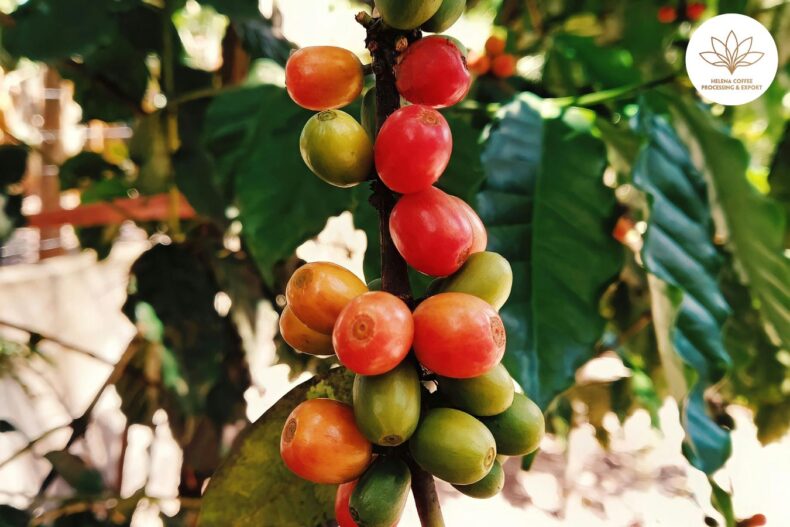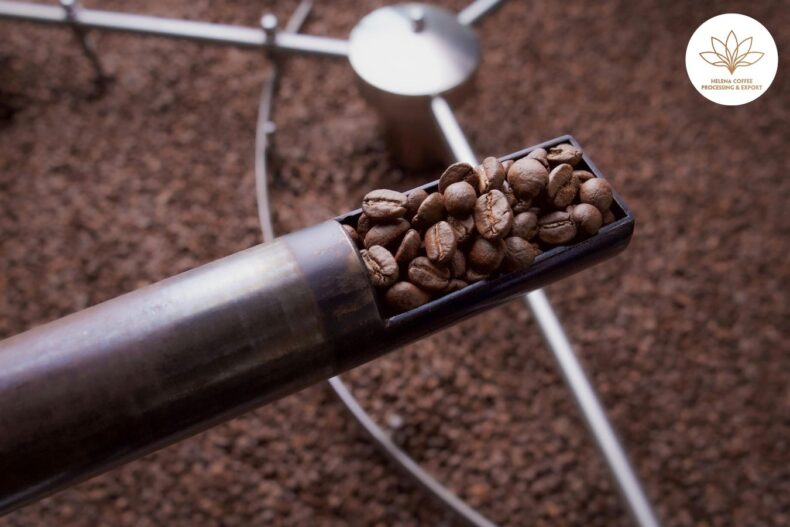
What does green coffee taste like? In coffee preparation, preserving natural coffee is an extremely important process, greatly affecting the taste and aroma of this beverage. After being harvested, coffee cannot be processed and made into drinks at the same time but must be preserved for gradual use. If natural coffee is stored incorrectly, it can lead to a decrease in coffee quality or flavor. Or even damaged and cannot be used anymore. Please refer to this article with Helena Coffee to learn What does green coffee taste like, how to distinguish it and preservation process
What does green coffee taste like?
Green coffee is raw, whole bean, unroasted coffee that still retains its natural green color and contains high levels of antioxidants, especially caffeine and health-boosting chlorogenic acid. Unlike regular coffee, coffee beans will be roasted at a temperature of about 246 degrees Celsius, green coffee is still roasted so it retains its natural green color, light green water and gentle flavor. It seems to have a flavor more similar to herbal tea than the familiar roasted coffee flavor. Green coffee is said to have effective weight loss effects.
When you drink green coffee, you will feel a different flavor. The taste is sweet but not too strong like roasted and ground coffee. Caffeine: caffeine content is less than 2%, this index is very small so this type of coffee is considered healthy coffee Minerals: in addition to the above substances, this type of coffee also contains some minerals such as nitrogen, potassium, magnesium, phosphorus, chlorine.
Classification of green coffee beans
Classify green coffee according to bean size
Coffee beans are classified into types with different sizes such as:
- Sieve 13, Sieve 14, Sieve 16, Sieve 18,…
- Green coffee in bucket (not ready yet)
Classifying coffee by bean size is a general classification method in the coffee industry that is widely applied in many countries around the world. After drying, the coffee beans are passed through a screen made of perforated metal with a diameter of 8 to 20 1/64 inches.
Sieve rarely uses millimeter units but uses a scale of 1/64 inch. However, it can still be converted to millimeters based on the table above. For example: Sieve 18 (meaning 18/64 inch) is equivalent to 7mm,… Another thing you need to know is that the size of the sieve in many countries is the same but the names are different. For example: Very large coffee beans (sieve size is 19-20 1/64 inches) in Africa and India are called AA, in Colombia they are called Supremo,…
How to filter coffee? The answer is: For example: Put coffee in the 18/64 inch sieve, then the remaining beans on the sieve will be placed in the 18 sieve coffee, any beans that fall will stay on the 16/64 sieve. inch is sieve 16. Because there is a lot of coffee on the sieve and the density is high, small seeds cannot fall, so classification like this cannot be 100% accurate. Therefore, according to the classification system, an error of 5% is still allowed, meaning that 100 grade 18 coffee beans are allowed to have 5 smaller or larger beans.
Classify green coffee beans by type
Green coffee includes two popular types of coffee: Arabica coffee and Robusta coffee. Arabica coffee, also known as tea coffee, is often grown in places with altitudes of 1000m or more. Arabica coffee is loved for its fragrant aroma, special aftertaste, less bitterness and elegant taste. Arabica has 5 popular varieties: Caturra, Bourbon, Mocha, Typica and Catimor. Unlike Arabica, Robusta coffee loves the sun, is suitable for hot and humid tropical climates, is grown in low mountainous areas, has good disease resistance and high caffeine content.
In addition to Arabica and Robusta, Vietnam is also famous for Excelsa coffee (jackfruit coffee) and Culi coffee (Bi coffee).
Green coffee bean processing process
Harvesting fresh coffee
Fresh coffee cherries will be harvested by farmers when they turn red. In Vietnam, coffee harvesting is still done manually by directly picking ripe coffee cherries by hand.
Fresh coffee process diagram
After being picked, fresh coffee cherries will be immediately separated from the skin if wet processing and honey processing methods are used. If using the dry processing method, the coffee cherries will be dried naturally in the sun to reduce the amount of water before being peeled.
Depending on the processing method, the coffee beans will be fermented or dried.
Reduces moisture in coffee beans
Before packaging, coffee beans will be treated to reduce moisture to 12.5% by sun drying or using a dryer.
Filter and classify coffee
After the coffee beans are dried and reduced in moisture, they will be put into a filter ready to remove foreign substances and classify by particle size. Then, depending on the buyer’s needs, the coffee beans will be colored or polished.
How to preserve green coffee beans
Store coffee in bags: (can use sacks, jute bags…). This is one of the commonly used methods today. However, when using this method, you need to pay attention to the following points:
- The moisture content of green coffee before putting it in the storage bag must be less than 13%.
- The less impurities the coffee has, the better. For type I and type II coffee, the impurity rate must be < 0.5%.
- Store in a warehouse with good insulation and humidity
- The warehouse must be disinfected and cleaned before placing coffee in bags
- Coffee bags should not be placed directly on the floor or close to the wall. They must be 0.3m from the floor and 0.5m from the wall.
- To avoid capsule compression due to compression of the upper capsules, the order of capsule placement must be reversed every 3 weeks.
Separate storage in silos: To save packaging and preserve green coffee longer, people often store green coffee in closed silos made of corrugated iron, concrete or good wood. The advantage of this form of preservation is to save packaging and increase storage time, save storage volume and avoid compaction, which reduces the looseness of green coffee beans.
Above is the content about what green coffee tastes like, how to distinguish it and the updated Helena Coffee preservation process sent to readers. We hope this information source will be a useful source of knowledge to help you better understand the above issue. During the research process, if you have any questions, please contact Helena Coffee for immediate support. Please follow our website to receive good articles about other fields.
Read more:


